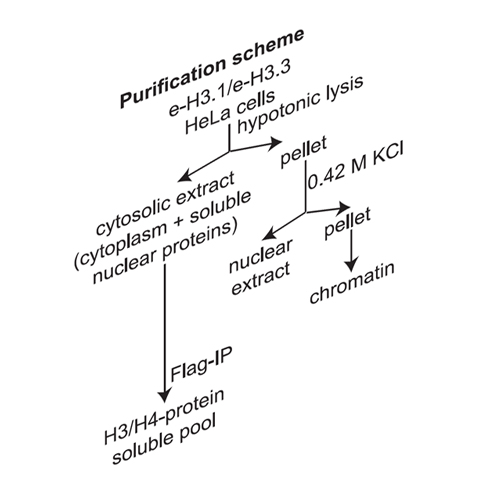Sequential Establishment of Marks on Soluble Histones H3 and H4
29-Mar-2011
Much progress has been made concerning histone function in the nucleus; however, following their synthesis, how their marking andsubcellular trafficking are regulated remains tobeexplored.To gainaninsight into these issues, wefocusedonsoluble histonesand analyzed endogenous and tagged H3 histones in parallel. We distinguished six complexes that we could place to account for maturation events occurringonhistonesH3andH4from their synthesis onward. In each complex, a different set of chaperones is involved, and we found specific post-translational modifications. Interestingly, we revealed that histones H3 and H4 are transiently poly- (ADP-ribosylated). The impact of these marks in histone metabolism proved to be important as we found that acetylation of lysines 5 and 12 on histone H4 stimulated its nuclear translocation. Furthermore, we showed that, depending on particular histone H3 modifications, the balance in the presence of the different translocation complexes changes. Therefore, our results enabled us to propose a regulatory means of these marks for controlling cytoplasmic/ nuclear shuttling and the establishment of early modification patterns.











